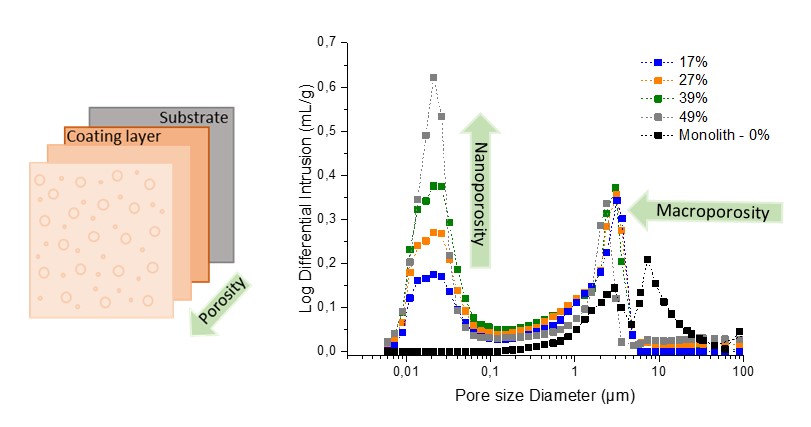Porosity of coatings
Mercury intrusion is a powerful and fast characterization technique to study the porosity of materials.
We can help you examine your product’s properties in terms of size, distribution of sizes, surface area and volume of pores. These are crucial properties determining the performance of your material for your specific application.
Case
In this case study, the porosity of a cordierite monolith coated with a catalyst on alumina-based washcoat, used for exhaust gas treatment, was investigated. The porosity of the washcoat influences the exhaust gas ability to enter the washcoat and get in contact with the catalyst particles for the catalytic conversion. Applying more than one coating layer can also influence the final porosity of the coating.
In this study, the coating has two porosity features; nanoporosity and macroporosity. Nanoporosity, describes the nanopores within the particles of the washcoat, while the macroporosity describes the packing density of these particles.
Results
It was found that the pore size of the particles, i.e. the nanoporosity, stayed the same, but the volume of the pores increased when coating layer amount increased. For the packing porosity, i.e. the macroporosity, the pore size between particles decreased indicating a denser packing. This suggests that the coating itself becomes more compact as the coating layer amount increases, despite having a constant pore size within the particles of the washcoat.
A crucial find since the catalytic performance depends on the porosity and an optimum coating layer with that material can be defined.

This method can be used to investigate the coating layer porosity in several different applications or industries, from pharmaceutical products, plastics, membranes, paints, etc.